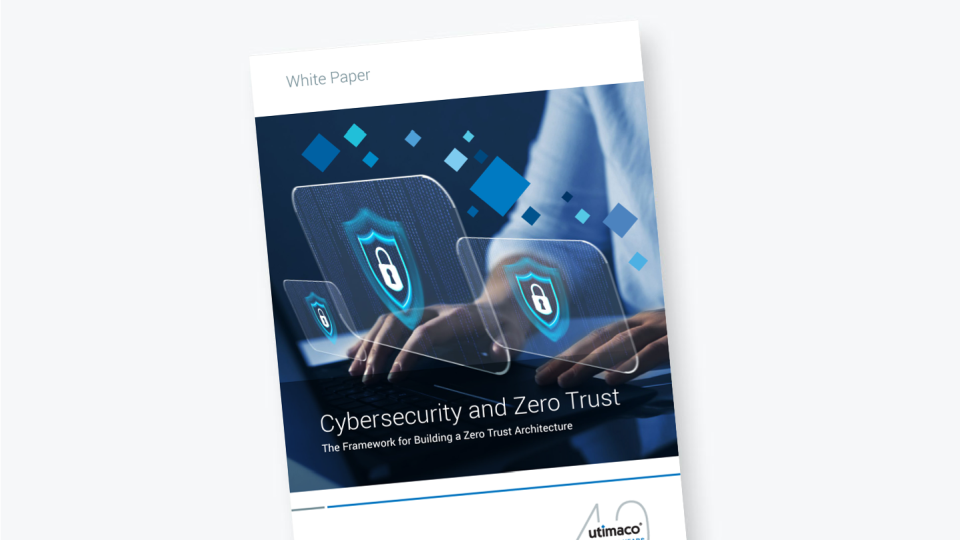Operation of all sizes suffer significant economic losses if they are affected by a data breach or application outage.
In this article, we look at how Zero Trust concepts are applied to data protection for the purpose of providing a proactive approach; helping to reduce attack surfaces, detect threats early, and safeguard critical data and resources - ultimately enhancing overall cybersecurity resilience.
What is Zero Trust Data Protection (ZTDP)?
The concept of ‘Zero Trust’ has been around for some considerable time, meaning ‘Never Trust, Always Verify’. It takes the idea of "least privilege" to its utmost conclusion: it entails placing trust in no entity by default and providing the minimum necessary privileges. Therefore, once a user's identity is authenticated, their access is limited strictly to the role they have been assigned, without any unnecessary permissions or privileges.
While the Zero Trust model has been associated with network security, its principles are equally applicable to data security and the broader security architecture. Building upon this principle, Zero Trust Data Protection (ZTDP) revolves around the concept of not automatically assuming trust in any user, device, application, or service that seeks access to data. Instead, it relies on a contextually-aware and least-privileged access approach that undergoes continuous evaluation and adjustment.
In today's digital environment, when the conventional network boundary is becoming less defined as a result of remote work, cloud computing, and the growing number of mobile devices, Zero Trust data security and protection is essential.
How Does Zero Trust Data Protection Address Critical Threat Use Cases?
Zero Trust Data Protection addresses several critical threat use cases, including:
Ransomware:
- Identity Compromise: By continuously verifying identities and employing strong authentication methods, Zero Trust reduces the likelihood of unauthorized access through compromised credentials, which is often the first step in a ransomware attack
- Code Execution: Zero Trust principles require strict access control and continuous monitoring. This helps mitigate the risk of ransomware attacks by limiting the execution of malicious code, even if an attacker gains initial access.
Supply Chain Attacks:
- Unmanaged Devices: Zero Trust extends its principles to unmanaged devices, ensuring that even devices outside the organization's control adhere to security standards before accessing critical applications and resources.
- Privileged Users Working Remotely: Zero Trust applies the principle of least privilege, ensuring that privileged users, even when working remotely, only have access to the resources necessary for their tasks, reducing the risk associated with supply chain attacks targeting privileged accounts.
Insider Threats:
- Behavioral Analytics: Zero Trust incorporates User and Entity Behavior Analytics (UEBA) to analyze and profile user behavior, including remote users. This helps identify deviations from normal patterns, aiding in the early detection of insider threats
- Remote Users: Continuous monitoring and risk-based access control are particularly valuable for remote users, as these mechanisms can help detect and respond to insider threats even when employees are working off-site.
What are the Core Principles of Zero Trust Data Protection?
The core principles and components of ZTDP encompass the following:
- Identity Verification: The initial step involves validating the identity of users and devices before permitting access to resources. Common practices incorporate Multi Factor Authentication (MFA), robust authentication methods, cloud technology, and endpoint security.
Read more about authentication in zero trust
Additionally, Zero Trust Data Protection emphasizes the importance of verifying the hygiene of assets and endpoints before they are allowed to connect to applications. This verification process ensures that devices connecting to the network meet certain security standards and are free from vulnerabilities or malware, further enhancing the overall security posture of the organization.
In Zero Trust, identity management and data encryption are fundamental. Since both disciplines rely on cryptographic keys, a solution for key generation, management, and storage is also required for Zero Trust.
- Least Privilege Access: Users and devices are granted only the bare minimum level of access essential for their specific tasks. A Zero Trust data access approach minimizes the risk of unauthorized access or lateral movement within the network
- Data Encryption: Data is secured through encryption while in transit and at rest. This ensures that even if data is intercepted or pilfered, it remains inaccessible to unauthorized entities
- Micro-Segmentation: The network is partitioned into smaller, controlled segments or zones with precise access controls. This limits an attacker's ability to move laterally within the network if they manage to breach one segment
- Continuous Monitoring: A continuous vigilant approach is adopted to scrutinize user and device behavior, as well as network traffic, for any irregularities or anomalies. This entails the real-time analysis of user activities, network traffic patterns, and access requests to promptly identify suspicious or malicious behavior
- Application and Data-Centric Security: Emphasis is placed on safeguarding the applications and data themselves, rather than solely relying on perimeter security. Strategies include implementing Data Loss Prevention (DLP) measures and applying security controls at the application level
- Zero Trust Architecture (ZTA): A comprehensive Zero Trust Architecture is instituted to enforce these principles across the entire organizational landscape, spanning on-premises, cloud, and hybrid environments
- Automation: Automation and orchestration mechanisms are deployed to enforce security policies and respond to security incidents in real-time, enhancing the agility and efficacy of security measures
- Risk-Based Access Control: Access controls are adapted based on the risk associated with users, devices, and specific activities. Activities deemed high-risk may trigger more stringent authentication requirements or access restrictions
- Security Analytics and Threat Intelligence: Leverage threat intelligence sources and security analytics tools to stay abreast of emerging threats and vulnerabilities that have the potential to impact the organization's security posture
- User and Entity Behavior Analytics (UEBA): Utilization of UEBA solutions to scrutinize and profile user and device behavior for the detection of deviations from normal patterns, thereby identifying potential threats.
What are the Benefits of Zero Trust Data Protection?
Zero Trust Data Protection offers a multitude of advantages, including:
- Continuous Risk Assessment: Ongoing evaluation of risks and threats, allowing for proactive security measures and timely responses to emerging threats
- Enables Safe Access from Anywhere: Facilitates secure access to data and resources from any location, supporting the needs of remote workforces and ensuring that security remains robust regardless of the user's location
- Ensures Data is Protected Everywhere: Comprehensive data protection, whether data is in transit or at rest, ensuring that sensitive information and files are safeguarded across all states
- Data Context and Sensitivity Awareness: Enhanced understanding of the context and sensitivity of data, enabling more precise and effective policy enforcement tailored to specific data types and usage scenarios
- Adheres to Current Compliance Standards: Helps organizations meet and maintain compliance with industry-specific regulations and data protection standards, reducing the risk of legal and regulatory penalties.
How Utimaco can help you
Incorporating Zero Trust principles into an organization's security strategy enhances its ability to address these critical threat use cases by reducing attack surfaces, implementing strict access controls, and continuously monitoring and analyzing user and device behavior across a diverse range of scenarios, including remote work environments.
Utimaco’s comprehensive security solutions support organizations to effectively implement and maintain robust Zero Trust Architectures. These solutions provide the necessary tools and technologies to establish continuous identity verification, enforce least privilege access controls, and safeguard data across the organization's entire infrastructure.
Download our White Paper on Zero Trust or Contact our security Experts.









